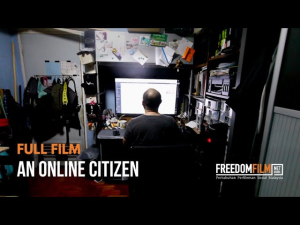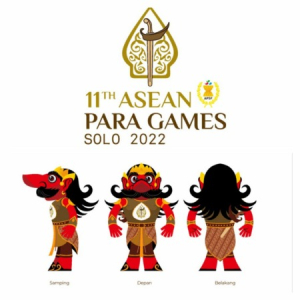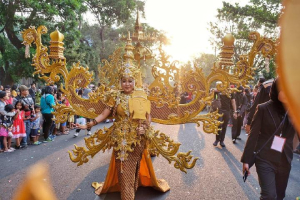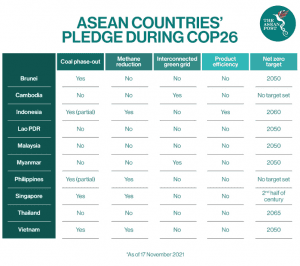The Challenge of ASEAN Institutionalism in Outer Space
Written by: Ade Meirizal & Dinda Julia Putri
A lot of people are blurry to consider space. Space activities are more complex. Not only for telecommunication, banking, and GPS utility, outer space can provide fish movement data, disaster mapping, and even agricultural sources on earth from satellites. With information from satellites, the quantity of fishery activity could be maximized and can help fishermen to trace fish locations throughout the sea. Furthermore, satellites can help farmers to map fertile soil to start agriculture and create sustainability in the quality of the goods (eco-business.com. 2021). Geographically, ASEAN is surrounded by sea, which means fishery activity is part of Southeast Asia people, and agriculture is an essential element in SEA society. SEA is the best place to establish a launch site because it is close to Geosynchronous Equatorial Orbit (GEO). GEO was the most suitable and conducive orbit for satellites, especially for communication satellites; most of the USA communication satellites were positioned in GEO to make data gathering more efficient and reliable (Peterson, 2003). In the historical record, a few countries in Southeast Asia, like Indonesia and Vietnam, joined the space activity a long time ago. Indonesia was the first SEA country to launch its own satellite in 1963 through a national entity called LAPAN (the Indonesian National Institute of Aeronautics and Space). Vietnam was a part of the Soyuz 37 mission to send their first cosmonaut to space. Thailand and Malaysia are the main actors in SEA space history, which focus on space powers. Uniquely, four ASEAN space powers are surrounded by minimal interest and technology in space, such as Cambodia, Laos, and Myanmar. Unlike many other state members, Singapore stressed its interest in industrialization and academic-centrics of space technology (Verspieren and Coral, 2021).
Advantages & Urgency
Most ASEAN state members are located on the equator line, namely; Indonesia, Brunei Darussalam, Malaysia, Singapore, Thailand, and Vietnam. This position is beneficial to cut off budget and efficiency. The equator can give an additional natural boost for rockets to reach space and affect rocket fuel and booster consumption. Due to safety and prevention during the rocket launching process, the coastline of each area in SEA was a potential place to establish a launch site so debris and failed launch would not hit citizens (scienceabc.com, 2022). The urgency of ASEAN to advance space activity is because of the geographical issue. We know that most ASEAN countries are lying on the ring of fire, the most dangerous area on earth. This area is vulnerable but has enormous potential in sources. Space technology such as satellites is beneficial in preventing disaster (Verspieren and Coral, p. 6. 2021). On the other hand, ASEAN is surrounded by major powers on geopolitics at the global level. Emerging countries outside of ASEAN, such as India, Brasil, and South Korea, show their progress in space activity, like India, which puts their space interest not only for commercial but also military purposes. Space rivalry has become a reality in recent decades. The main actors in space are not only states but also privateers and possibly threatening regional interests.
Challenges
Space activity in ASEAN was organized by SCOSA (Space Technology Development and Utilization), and this framework is part of the ASEAN Committee on Science and Technology (COST). SCOSA is one of the most extensive plans of ASEAN from 2016 to 2025 through the ASEAN Plan of Action on Science, Technology, and Innovation (APASTI), released in October 2017 (Verspieren and Coral, p. 11, 2021). However, SCOSA is a sub-committee that was created by ASEAN Committee on Science, Technology, and Innovation (COSTI). In other words, SCOSA is not an independent entity in ASEAN. SCOSA was established under the huge COSTI umbrella. Compared to the European Space Agency (ESA), which organized eight programs, namely; space science, human & robotic exploration, observing the earth, telecommunication, satellite navigation, space transportation, technology and operations, and standing independently, SCOSA stressed its focus on satellite, geoinformatics, and space technology applications (asean.org. 2022). Moreover, the “sub-committee” has a deficiency. Although it has a specific responsibility in terms of purposes (Merriam-webster.com, 2022), this form has many disadvantages. According to the management studies, the sub-committee has limitations like; indecisiveness that brings stakeholders to the disconcerting decision, high cost, domination by few, and lack of secrecy, which means there are no stakeholders responsible for maintaining the decision had been taken.
All countries in ASEAN can represent their country in SCOSA, but funding and participation are optional. Lack of sustainable funding affects space development on a regional level. Although state members are integrated into ASEAN, each country has its own space of cooperation outside of ASEAN due to the characteristic of ASEAN itself, which is flexibility. Many ASEAN countries authorize their space initiative from the national level or support from the space-faring countries outside of ASEAN like Japan and China (Verspieren and Coral, p. 12, 2021). We can assume this uncertainty might be crucial to institutionalizing space in ASEAN. The ambiguity of members to interpret common goals in the space program creates gaps among members. Each member has their own orientation in space activity. Like Singapore focuses on space academics and business, Malaysia, Indonesia, and Vietnam are more interested in space power, and Brunei Darussalam is uninterested in space. This uncertainty is a symbol of the emptiness of authority in the institutionalization of space cooperation within the ASEAN body. The “flexibility” tradition that is used in many ASEAN actions is one of the biggest challenges. ASEAN traditionally allows its members to take their own action without interference, and its effect is to equalize space development goals with a common interest at the regional level.
Liberal institutionalism concept shows the direction in order to reach common goals. This concept is possible to organize its members to build the main agenda and accelerate equal economic development. Conceptually, Liberal Institutionalism argues that in order for there to be peace in international affairs, states must cooperate together and, in effect, yield some of their sovereignty to create “Integrated communities” to promote economic growth and respond to regional and international security issues (Rebecca David, 2011). Even though SCOSA established ASEAN, the sub-committee in ASEAN space activity is not enough. Regional bodies like SCOSA should stand autonomously, supported with clear main agendas, shared interests, and collective financial support. By designing mutual goals for state members, ASEAN can accomplish priority sectors in space technology. Single sector by utilizing satellites for collecting data affects many aspects of society in ASEAN. For example, using fish movement data from satellites can stimulate the fish quantity and rising efficiency in terms of the fishery. Farmers and stakeholders can use satellites to monitor fertile soil and crops, like Global Agriculture Geo-monitoring Initiative (GEOGLAM) launched by the USA authority (Brown, 2015). Remote sensing applied in satellites is possible to map disasters in various territories. For these reasons, ASEAN countries can apply outer space technology to rising prosperity, reducing hunger, and value-added to ocean products and agriculture, not only at the regional level but also around the globe.
About Writers:
- Ade Meirizal studied in the Master’s Degree program in International Relations, UGM. he has an interest in space policy and its connection to global affairs. He has a field of interest covering Political psychology in international relations, diplomacy, and outer space. Contact information: ademeirizal@mail.ugm.ac.id
- Dinda Julia Putri currently studies in the Master’s Degree program in International Relations, UGM. She was an awardee from Beasiswa Pendidikan Indonesia (BPI), managed by Lembaga Pengelola Dana Pendidikan (LPDP) in partnership with the Ministry of Education, Culture, Research, and Technology. She has a field of interest covering diplomacy, foreign policy, and European Union Studies. Contact information: juliaputridinda@gmail.com
Bibliography
- Verspieren, Quentin & Coral, Giulio. (2022). Introduction: Why Space Matters in ASEAN. Springer.
- Devitt, Rebecca. (2010). Liberal Institutionalism: An Alternative IR Theory or Just Maintaining The Status Quo. E- International relations. https://www.e-ir.info/2011/09/01/liberal-institutionalism-an-alternative-ir-theory-or-just-maintaining-the-status-quo/
- Brown, E. Molly Rebecca. (2015). Satellite remote sensing in agriculture and food security assessment. Elsevier. doi: 10.1016/j.proenv.2015.07.278.
- Ashish. (2022, July 8). Why Are Rockets Launched From Areas Near The Equator? Retrieved from https://www.scienceabc.com/eyeopeners/why-are-rockets-launched-from-areas-near-the-equator.html.
- Priority Areas of ASEAN Science and Technology Network. Retrieved from https://astnet.asean.org/sub-committee-on-space-technology-and-applications-scosa/
- Measures, Nick. (2021, March 2). How Satellite Imagery is Helping Precision Agriculture Grow to new Heights. Retrieved From https://www.eco-business.com/news/how-satellite-imagery-is-helping-precision-agriculture-grow-to-new-heights/ www.merriam-webster.com/dictionary/subcommittee


 Logo and Mascot of 11th ASEAN Para Games (Foto: Jawapos)
Logo and Mascot of 11th ASEAN Para Games (Foto: Jawapos) Festival in Solo: Solo Batik Carnival (Foto: Instagram/ solobatikcarnival_official)
Festival in Solo: Solo Batik Carnival (Foto: Instagram/ solobatikcarnival_official)



